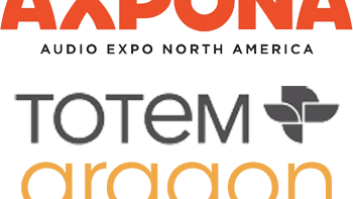Although DVD players have taken much of the luster away from trusty VCRs, there is still some life in tape-based video, according to vendors going to CES.
In fact, 15 million VCRs will be sold in 2002, just about the same number as DVD players. And as a variety of DVD-based recording formats struggle for dominance this year and beyond, the VCR remains a comfortable and affordable alternative.
Showgoers shouldn’t expect many analog VHS breakthroughs, other than plummeting prices, at CES, but digital D-VHS models are just coming to life.
The D-VHS format was finalized in July 1998 by JVC and a number of hardware makers have signed on to support it. D-VHS decks record digital bit streams such as satellite signals or HDTV programs.
Several years ago, a number of manufacturers introduced D-VHS recorders with standard definition capability, but one by one, each quietly disappeared. Panasonic introduced the first HD-level D-VHS deck in 1999 and withdrew it once it became clear that copy protection issues were going to be a problem.
Last fall, Mitsubishi and JVC resurrected the format with HDTV capability as a means of providing more content for DTV owners.
Mitsubishi marketing VP Bob Perry said D-VHS is the only currently practical method of recording and playing back HDTV programming, at least until 2005 when high-definition recordable DVD decks are expected to arrive.
Announced in May and shipped to dealers in November, the Mitsubishi HS-HD2000U ($999) receives its high-definition signal in digital form through an IEEE 1394 connection to an integrated HDTV or IEEE 1394-equipped HDTV receiver. Mitsubishi has five TVs with 1394 inputs. The HS-HD2000U also supports HAVi and the 5C copy protection system.
Perry admitted, “there are some Beta/VHS issues” within the format. D-VHS inventor JVC launched its D-VHS VCR using an encryption system called D-Theater. For cost and practicality issues, Mitsubishi elected not to include it, but if pre-recorded tapes with D-Theater encryption are ever released — and JVC expects they eventually will be — the JVC deck will play them but the Mitsubishi deck will not.
Even with the copy protection issues, Perry is a big believer in D-VHS and predicts prices will drop quickly.
Last fall, JVC began a soft launch of the HM-DH30000U, ($1,999 suggested retail) HDTV-compatible D-VHS VCR. Jerry Barbera, JVC Consumer Video VP, said his company is planning a formal launch of the player at CES. Because the deck offers component video output, JVC is targeting the installed base of 2 million DTV owners.
So far, other early D-VHS supporters continue to watch D-VHS from the sidelines. Bill Cubellis, Sony’s component A/V solutions marketing director, said his company is electing to wait for optical-disc based recording solutions for HDTV.
Panasonic, which offered the PV-HD1000 three years ago, is still watching the copy protection issues.
“We’re studying it closely. If things warrant it, we’ll come to market,” said Tom Hantson, Panasonic’s national marketing manager.
Meanwhile, Panasonic continues to pace the VCR deck market.
“The industry is going through a decline and our business is flat, unit-wise,” Hantson said. “Dealers are dropping third-tier brands as they shorten up the shelves.”
Panasonic will “shorten our lineup” this year, dropping the Quasar brand and 2-head models, he said. The S-VHS segment will include only the PV-S4821 carry-over model. In total, the model count was reduced from eight units to five this year.
“The price of DVD has gone down so much, it’s pressuring VCR, so there’s not much price left to take out,” Hantson said.
A new growth segment comes from combination DVD/VCRs, he said. Panasonic will again carry two DVD/VCR SKUs in 2002, but will “enhance them with additional features, deliver new models in March and see a price reduction,” Hantson said. A top-of-the-line, progressive DVD/VHS Hi-Fi deck is planned at a $350 suggested retail.
Sony’s Cubellis noted the market for Hi-Fi VCRs was growing while 2-head and 4-head mono was dropping. Cubellis said that once Sony hit the magic $99 price point, sales went up. Sony is adding value to their lineup by including new silver styling to match the popular Wega TV line at $129 and $149 price points.
Randy Staggs, Thomson video product planning general manager, said RCA is focusing on Hi-Fi decks this year using Commercial Advance and a “unique design.”
Bob Pleyer, Sharp’s product marketing manager, views VCR as a total replacement market.
Pleyer predicted that manufacturers will begin to abandon the category if pricing drops much lower. Sharp dropped the 2-head market two years ago, and will maintain its SKU count with 4-head mono and Hi-Fi decks for 2002. The emphasis will be on design, rather than features.
Even VHS inventor JVC is scaling back its VCR analog offerings “rather than mix it up with stripped down $49 and $59 models,” Barbera said.
JVC will drop out of the 4-head mono category and focus on Hi-Fi and S-VHS models when the line changes over in early summer. Four S-VHS decks are planned for viewers with high-resolution satellite and cable programming.
“Three of those models will have suggested retail prices under $250, making it an easy reach for the average consumer,” he said.
JVC will offer a variety of VCR combination products including Mini DV and hard disc recorders, and a VHS Hi-Fi/DVD combo (model HR-XVC1U, $349).
Samsung is reducing its VCR SKU count to five this year, and two of those will be worldwide format players.
Toshiba also cut its lineup from six to four models, including a compact chassis 4-head mono model for $79, and a 4-head Hi-Fi model for $89. The new W522 and W622 are full-size components with universal remotes and front A/V jacks. The new W727 has a full-size component width, VCR Plus+ and jog shuttle for $119,” stated Jodi Sally, Toshiba marketing director.












